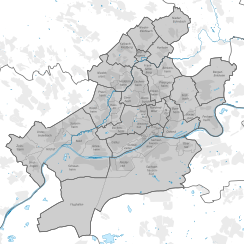Heiligenstock transmitter
|
Heiligenstock transmitter
|
|||||||||||||||||||||||||||||||||||||||||||||||||||||||||||||||||||||||||||||||||||||||||||
|---|---|---|---|---|---|---|---|---|---|---|---|---|---|---|---|---|---|---|---|---|---|---|---|---|---|---|---|---|---|---|---|---|---|---|---|---|---|---|---|---|---|---|---|---|---|---|---|---|---|---|---|---|---|---|---|---|---|---|---|---|---|---|---|---|---|---|---|---|---|---|---|---|---|---|---|---|---|---|---|---|---|---|---|---|---|---|---|---|---|---|---|
| Basic data | |||||||||||||||||||||||||||||||||||||||||||||||||||||||||||||||||||||||||||||||||||||||||||
| Place: | Frankfurt-Seckbach | ||||||||||||||||||||||||||||||||||||||||||||||||||||||||||||||||||||||||||||||||||||||||||
| Country: | Hesse | ||||||||||||||||||||||||||||||||||||||||||||||||||||||||||||||||||||||||||||||||||||||||||
| Country: | Germany | ||||||||||||||||||||||||||||||||||||||||||||||||||||||||||||||||||||||||||||||||||||||||||
| Altitude : | 184 m above sea level NHN | ||||||||||||||||||||||||||||||||||||||||||||||||||||||||||||||||||||||||||||||||||||||||||
| Coordinates: 50 ° 9 ′ 16.7 ″ N , 8 ° 42 ′ 39.5 ″ E | |||||||||||||||||||||||||||||||||||||||||||||||||||||||||||||||||||||||||||||||||||||||||||
| Use: | Broadcasting station | ||||||||||||||||||||||||||||||||||||||||||||||||||||||||||||||||||||||||||||||||||||||||||
| Accessibility: | Broadcasting system accessible to the public | ||||||||||||||||||||||||||||||||||||||||||||||||||||||||||||||||||||||||||||||||||||||||||
| Owner : | Hessian radio | ||||||||||||||||||||||||||||||||||||||||||||||||||||||||||||||||||||||||||||||||||||||||||
| Demolition : | Late 1960s | ||||||||||||||||||||||||||||||||||||||||||||||||||||||||||||||||||||||||||||||||||||||||||
| Data on the transmission system | |||||||||||||||||||||||||||||||||||||||||||||||||||||||||||||||||||||||||||||||||||||||||||
|
|||||||||||||||||||||||||||||||||||||||||||||||||||||||||||||||||||||||||||||||||||||||||||
| Waveband : | AM station | ||||||||||||||||||||||||||||||||||||||||||||||||||||||||||||||||||||||||||||||||||||||||||
| Radio : | MW broadcasting | ||||||||||||||||||||||||||||||||||||||||||||||||||||||||||||||||||||||||||||||||||||||||||
|
|||||||||||||||||||||||||||||||||||||||||||||||||||||||||||||||||||||||||||||||||||||||||||
| Position map | |||||||||||||||||||||||||||||||||||||||||||||||||||||||||||||||||||||||||||||||||||||||||||
|
|
|||||||||||||||||||||||||||||||||||||||||||||||||||||||||||||||||||||||||||||||||||||||||||
The Heiligenstock transmitter was a broadcasting facility for medium-wave broadcasting by the Hessian broadcasting company and its predecessor organizations. Heiligenstock is an old field name on the Berger ridge in Frankfurt am Main - Seckbach . The transmitter near Friedberger Landstrasse went into operation on July 10, 1926 with an output of 1.5 kW and replaced a 0.25 kW transmitter that had been in use since March 31, 1924. In 1932 the transmitter, which had previously used frequencies between 700 and 770 kHz , switched to 1157 kHz (wave exchange with Leipzig ) and was boosted to 17 kW. When the Lucerne Wave Plan came into force in 1934, the transmitter switched to 1195 kHz. The frequency was operated in the same wave mode with the transmitters Kassel , Koblenz , Trier and temporarily Freiburg and Kaiserslautern .
In the 1930s the transmitter was boosted to 25 kW. A 107 meter high wooden tower , which stood in Mühlacker until 1934 , acted as the transmission tower . In 1938 this tower was demolished due to its disrepair and replaced by a new wooden tower of the same height. During this work a makeshift antenna, which was stretched between 2 wooden masts each 35 meters high, took over its function. Shortly before the US Army approached, the facility was blown up on March 25, 1945 on the orders of the National Socialists. The makeshift antenna survived World War II and was used until a new transmitter mast was erected in 1947. This transmission mast was 122.5 meters high and was fed with the transmission energy above the isolator located in the mast construction at a height of 82 meters.
As early as April 1945 broadcasting could be resumed as a makeshift with an American 1 kW transmitter. From November 1945 a mobile German transmitter with an output of 20 kW was used. On August 23, 1947, regular transmission with 60 kW was resumed. For this purpose, a 100 kW railway transmitter, the only one of its kind, was permanently installed at the Heiligenstock site.
On September 1, 1949, the Hessischer Rundfunk had to give the frequency 1195 kHz to the voice of America . Despite an increase to 100 kW, Hesse could only be insufficiently supplied with the new 1438 kHz frequency.
With the entry into force of the Copenhagen Wave Plan , Frankfurt had no frequency of its own. 1439 kHz could only be used until the Luxembourg II transmitter went into operation . From 1951, a directional antenna consisting of four 121-meter-high steel lattice masts was used as the transmitting antenna . The system operated by the Hessischer Rundfunk transmitted on the frequency 593 kHz. (From 1952 in single-wave operation with the Hoher Meißner transmitter ). The directional antenna made it possible to hide the frequency in the dark in the direction of the regular users Sundsvall and Sofia II.
On September 18, 1967, the system was replaced by the new Weiskirchen transmitter and the facilities were later largely dismantled. Parts of the site have been abandoned. Today they belong to the orchards in the Frankfurt green belt . In the area of the former transmission masts, some concrete foundations and building remains are freely accessible. The Hessischer Rundfunk uses the remaining buildings on Friedberger Landstrasse as guest accommodation, among other things.
From the end of 1947 to 1954, the Hessischer Rundfunk operated a shortwave transmitter with a transmission power of 1 kW on the frequency 6190 kHz at the Heiligenstock location parallel to medium wave .
To supply the American troops, AFN Frankfurt put another medium wave transmitter into operation on June 1, 1945 at the Heiligenstock location. This was increased from initially 1 kW to 10 kW around 1947. The frequency was changed from 1411 kHz to 601 kHz around 1948, first to 593 kHz in 1950 and finally to 935 kHz in 1951. In the same year it was replaced by the large broadcaster Weißkirchen .
From 1947 to the mid-1980s, the DENA station of the German news agency was located northeast of the facility . At the beginning of the 1990s, the Heiligenstock Park Cemetery was laid out on part of this site .
literature
- Andreas Brudnjak: The history of the German medium wave transmission systems from 1923 to 1945 , ISBN 978-3-939197-51-5 , page 46-48, page 112
Web links
Individual evidence
- ↑ hr Chronicle from 1923 to 1932. In: hr.de . Hessischer Rundfunk , accessed on April 6, 2020 .
- ↑ Gerhart Goebel: The German radio until the entry into force of the Copenhagen wave plan
- ↑ hr Chronicle from 1960 to 1969. In: hr.de . Hessischer Rundfunk , accessed on April 6, 2020 .
- ↑ http://www.cvni.net/radio/nsnl/nsnl047/nsnl47fswth.html


